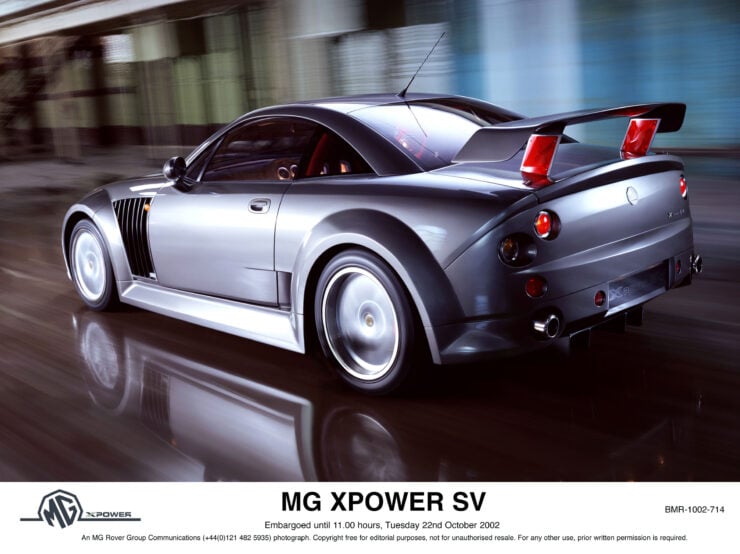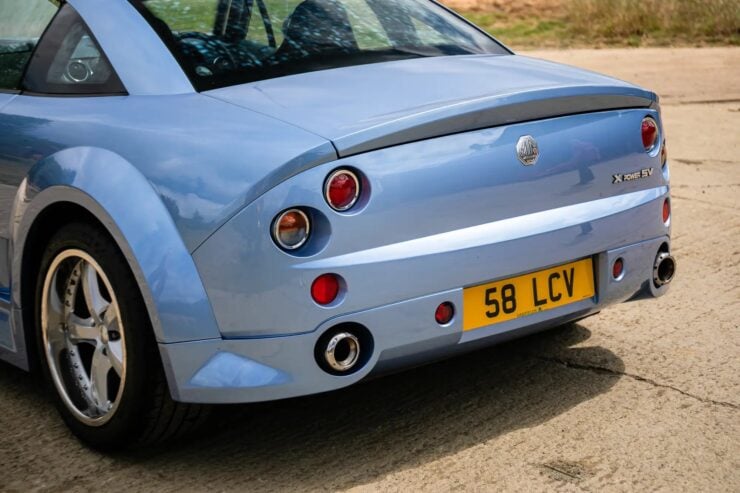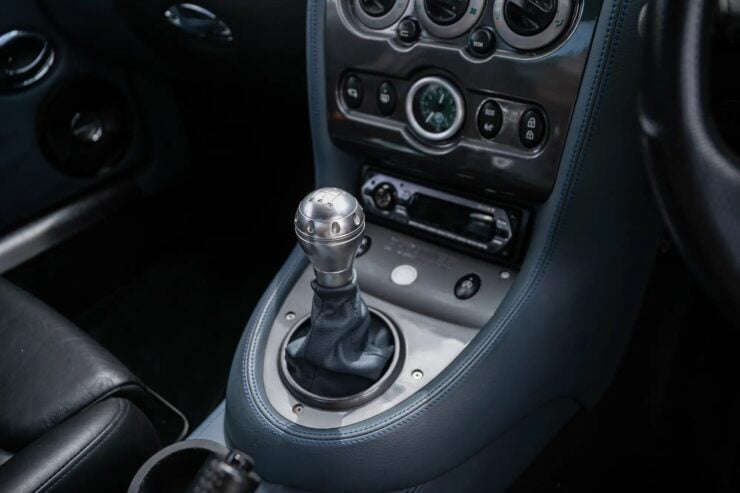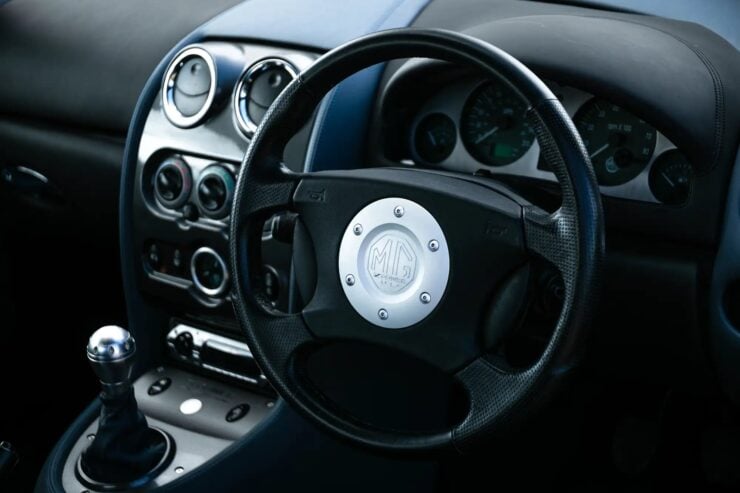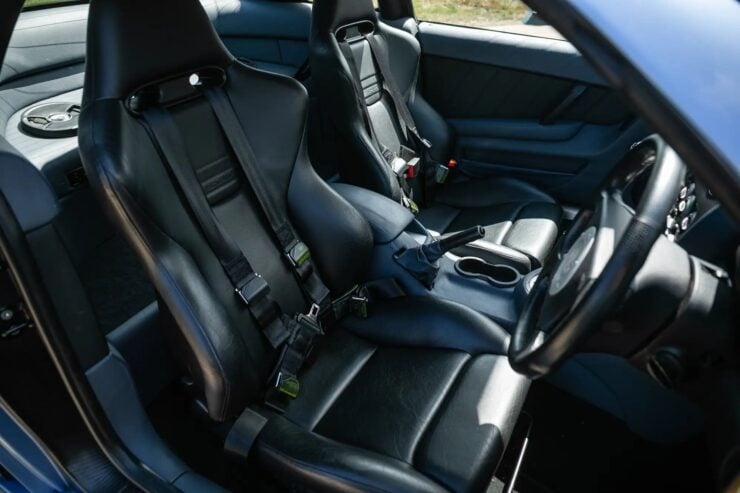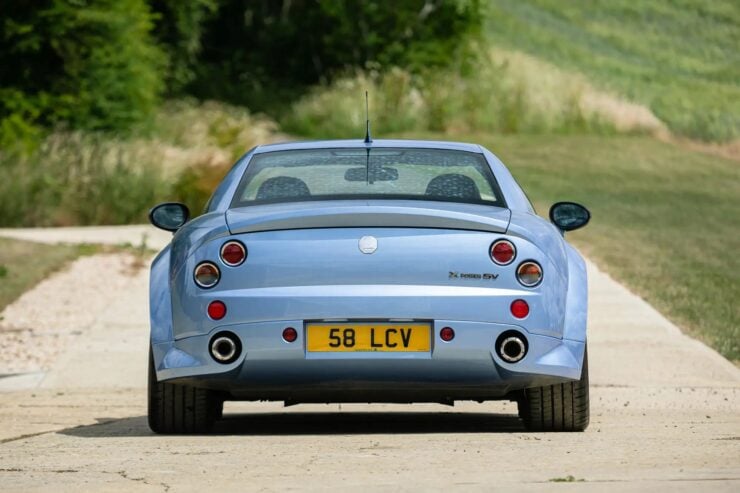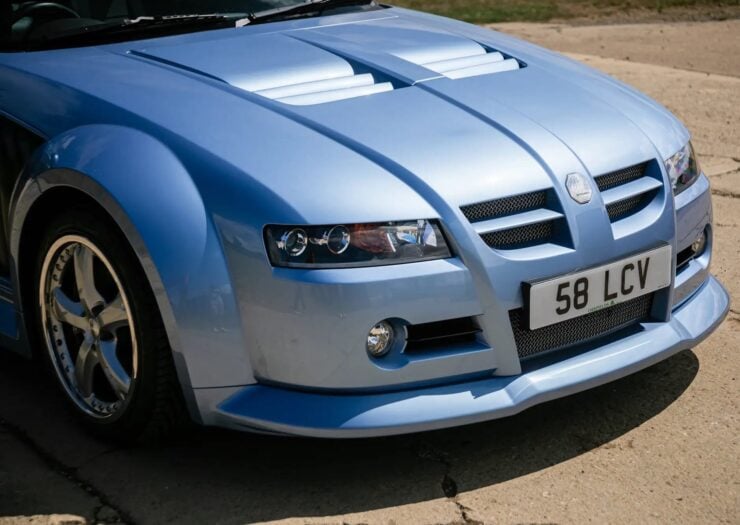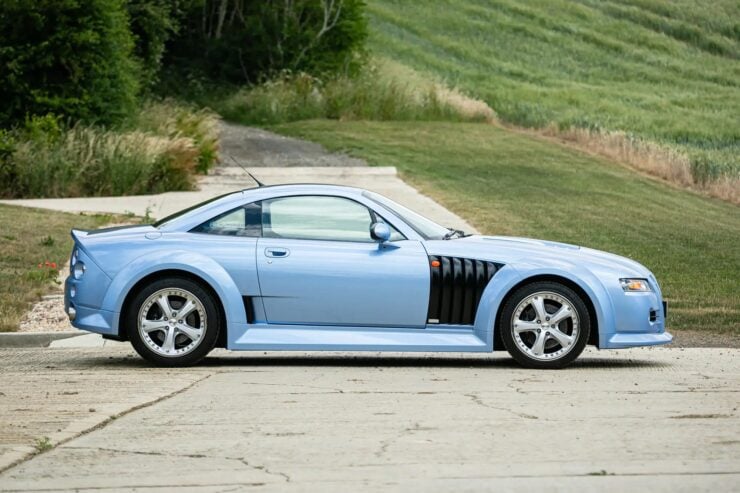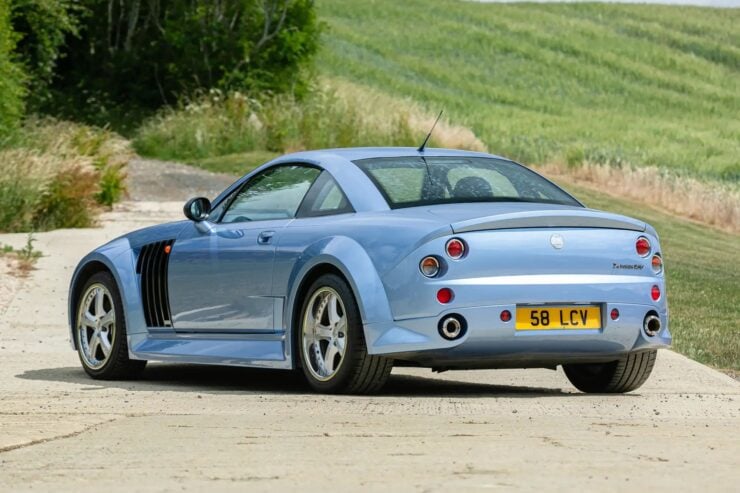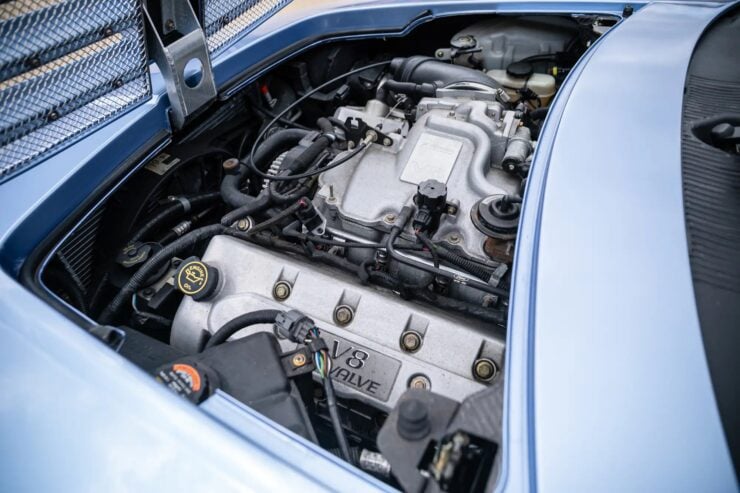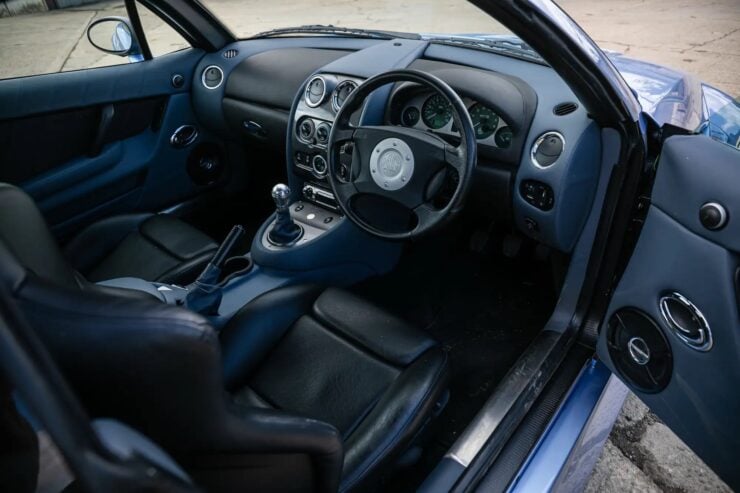This is a 2007 MG XPower SV, it’s a relatively rare car with just 82 produced in total. It’s been blamed for the downfall of three separate companies, and named “the machine that broke three car companies” as a result.
Despite all of the above, the XPower SV was a capable performer with near-supercar levels of speed. It had a full carbon fiber body, it could reach speeds of up to 175 mph (282 km/h), it managed the 0 – 60 mph dash in 4.9 seconds, and if that wasn’t enough, Rowan Atkinson (of Mr Bean fame) owned one too.
Fast Facts: The MG XPower SV
- The MG XPower SV was a carbon fiber-bodied sports car built during MG Rover’s final years, with only 82 produced. It featured a Ford Modular V8, dramatic styling by Peter Stevens, and near-supercar performance. The SV was assembled in Italy and completed in the UK, but failed commercially due to its high cost and poor timing.
- Its origins trace back to the De Tomaso Biguà and Qvale Mangusta, which MG Rover acquired in 2001. The XPower SV reused the Mangusta’s chassis and drivetrain but was entirely re-skinned and rebranded. Variants included the SV, SV-R, and prototypes like the SV-RS with power outputs ranging from 320 bhp to over 450 bhp.
- Performance specs were highly competitive for the era: the SV-R hit 60 mph in 4.9 seconds and topped out at 175 mph. Suspension included MacPherson struts and rear double wishbones, with AP Racing brakes and Michelin Pilot Sport tires.
- The 2007 XPower SV shown in this article is a rare late-production example with just 7,289 miles on the clock. Finished in Dusty Blue, it includes a full service history, both sets of keys, and original documentation. It will be auctioned by Iconic Auctioneers on August 23, with an estimate of £30,000–£35,000 ($38,700–$45,150 USD).
History Speedrun: The MG XPower SV
The MG XPower SV was perhaps one of the most unusual and misunderstood vehicles to emerge from early-2000s Britain. Developed during MG Rover’s final years, it was an ambitious and entirely unconventional attempt to inject performance credibility into the ailing company. Ultimately it would fail, but it wouldn’t be for want of trying.
Above Video: This is the original Top Gear segment on the MG XPower SV hosted by Jeremy Clarkson.
With Italian-American roots, a Ford V8 heart, and a carbon fiber body penned by a designer who’d worked on the McLaren F1 supercar, the XPower SV had all the right ingredients – just not the right timing.
The XPower SV’s foundation wasn’t British at all – it was Italian-American. In the late 1990s, Alejandro de Tomaso and his team developed the De Tomaso Biguà, which was later rebadged as the Qvale Mangusta after De Tomaso’s collapse. The Mangusta had a stiff steel chassis, a Ford 4.6 liter Modular V8, and quirky styling by Marcello Gandini of Lamborghini Miura and Countach fame.
Qvale, the US Italian firm producing the Mangusta, struggled with poor sales and awkward branding. Only 284 were made before MG Rover stepped in and purchased the rights in 2001. MG’s plan? Strip it back to the chassis and drivetrain, then rebuild it with a new body design and badge under the “XPower” performance sub-brand that was intended as a rival to the likes of Mercedes-Benz’s AMG and BMW’s M division.
MG enlisted Peter Stevens, the designer of the McLaren F1 and Jaguar XJR-15, to rework the Qvale’s awkward body. The result was dramatically more aggressive and inline with early-2000s sports car aesthetics: flared arches, wide track, deep intakes, plenty of vents, and a fastback-style tail. The body panels were made from carbon fiber, supplied by Italian firm Belco Avia – better known for its aerospace and defense work.
The car was unveiled as the MG X80concept in 2001, then rebranded and finalized as the MG XPower SV in 2002. Production began in 2003, with cars assembled in Modena, Italy by Vaccari & Bosi, before being completed at MG Rover’s Longbridge facility in the UK.
At the core of the XPower SV sat the tried-and-true Ford 4.6 liter Modular V8, the same block found in the Ford Mustang Mach 1 of the era. Output varied depending on trim, the standard SV had 320 bhp at 6,000 rpm and 302 lb ft of torque.
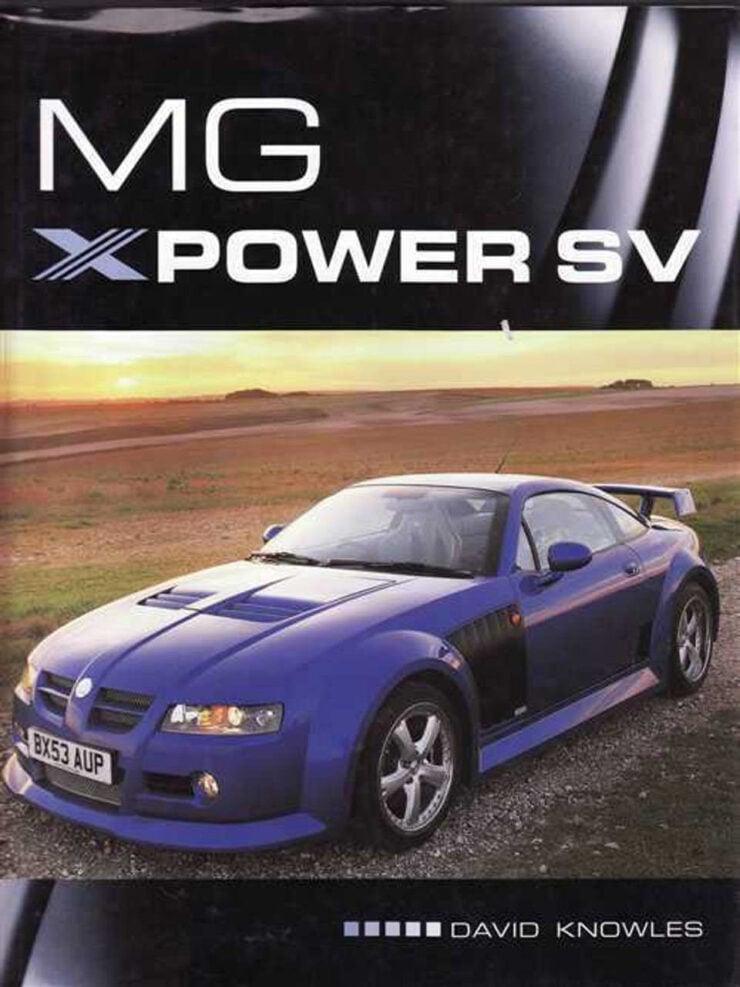

The SV-R had 385 hp (some sources cite as much as 400 bhp) using a Roush-tuned version of the same V8, the SV-S and SV-RS were prototypes, some experimental versions were fitted with a 5.0 liter or even 5.5 liter supercharged V8s with power exceeding 450 bhp.
The standard SV could do the 0 to 60 mph dash in 5.3 seconds, while the SV-R cut that to just 4.9 seconds, with a top speed of 175 mph (282 km/h). Those SV-R figures were supercar numbers by the standards of the time, and they attracted no small amount of attention for the unusual new car.
The transmission was a Tremec T45 5-speed manual, with an optional automatic version tested but rarely optioned. Power was sent to the rear wheels via a limited-slip differential – considered essential due to the difficulty of keeping the rear wheels from spinning under heavy acceleration.
Suspension was independent front and rear, with MacPherson struts at the front and a double wishbone setup at the rear. Braking came via AP Racing ventilated discs all round, and wheel sizes were 18″ front with 19″ rear alloys, shod with Michelin Pilot Sport tires on all four corners.
The XPower SV’s cabin reflected MG Rover’s limited resources – it was spartan but functional, with leather-trimmed racing seats, minimal switchgear, and lots of visible carbon fiber. Some parts-bin items from Fiat and Ford crept in, including HVAC controls and switches. A few customer cars received upgraded interiors depending on order preferences, but the focus was weight savings and performance over luxury.
MG Rover had originally planned for 1,000 units per year, with global ambitions, but the reality was very different. High production costs, low brand recognition, and MG Rover’s worsening financial position meant only an estimated 82 cars were ever completed before production ceased in 2005.
The MG XPower SV received mixed reviews on launch – its styling and performance were largely praised, but critics questioned its high price (around £65,000), its lack of refinement, and the company’s ability to support such a low-volume exotic.
Despite its commercial failure, the car remains an oddball cult favorite today. Its rarity, performance, carbon fiber body, and Ford Mustang V8-based serviceability make it an unusual but viable modern classic. The only problem is finding one – as they only rarely come up for sale.
The 2007 MG XPower SV Shown Here
The car you see here is an original 2007 MG XPower SV finished in Dusty Blue, it was bought brand new by the current owner, and now seller, and first registered on the 1st of October 2007.
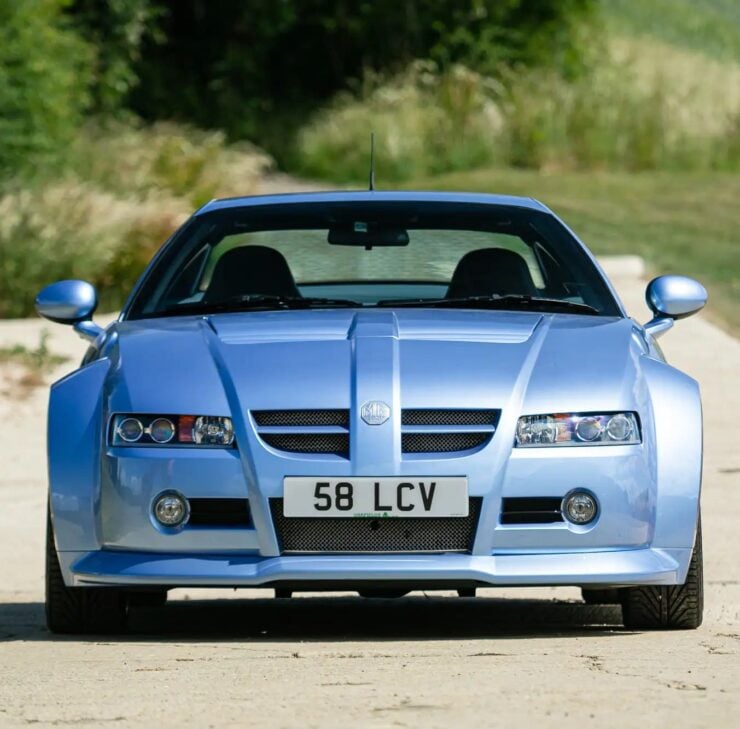


It’s covered a reported 7,289 miles from new, this mileage is supported by the history file which includes seven previous service invoices, and ten old MOTs back to October 2010. It comes with the original MG X-Power slipcase brochure with its CD-Rom and both sets of keys, the spare set still sporting the original factory tag.
The car has just been given a light recommissioning and an oil service, and it’s due to roll across the auction block with Iconic Auctioneers on the 23rd of August with a price guide of £30,000 – £35,000 or approximately $38,700 – $45,150 USD. You can visit the site here if you’d like to read more or register to bid.
Images courtesy of Iconic Auctioneers


